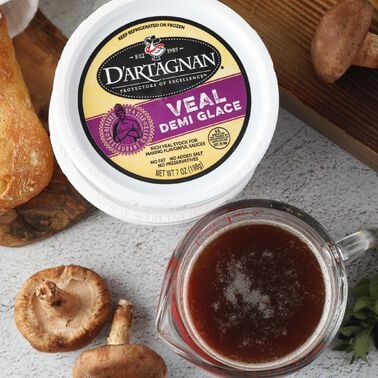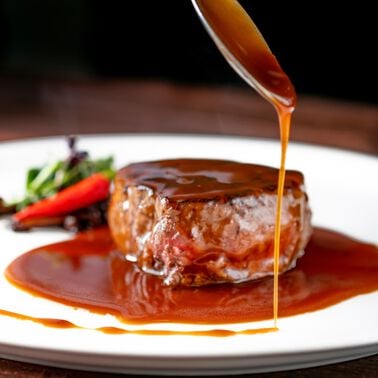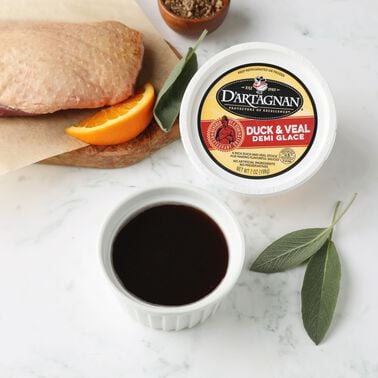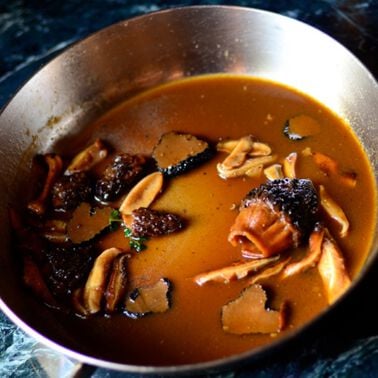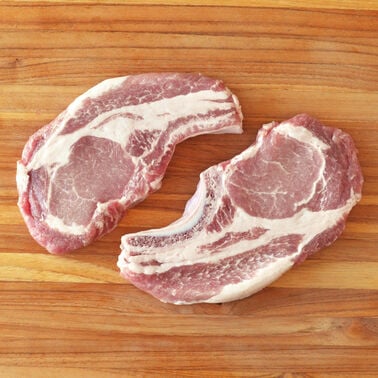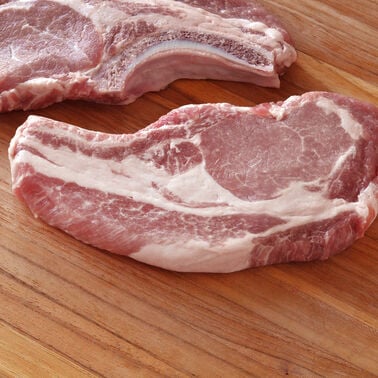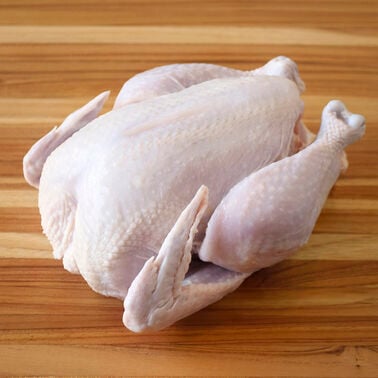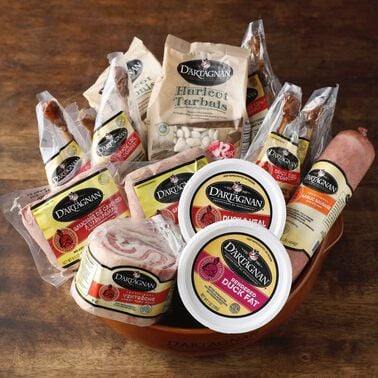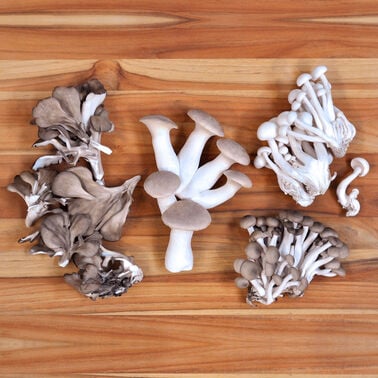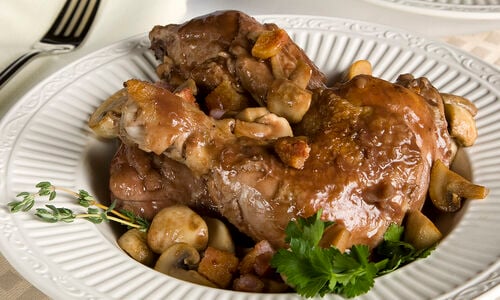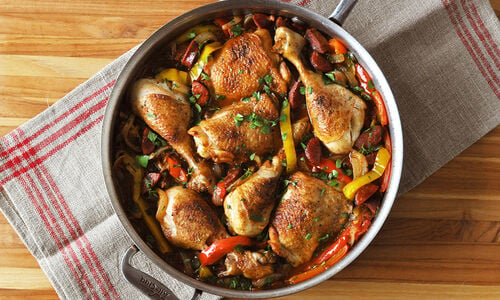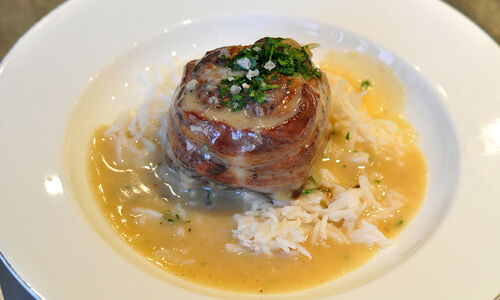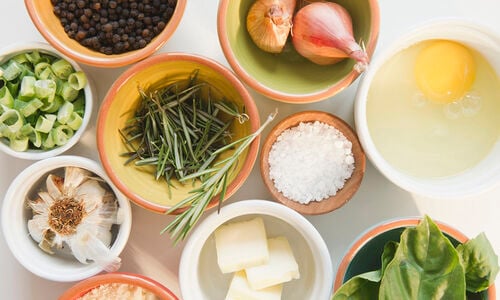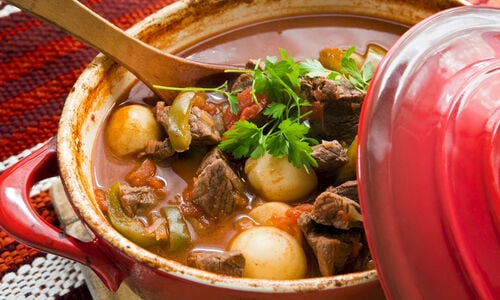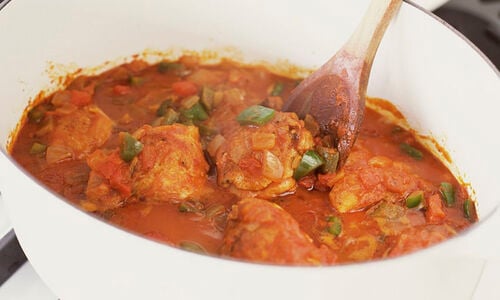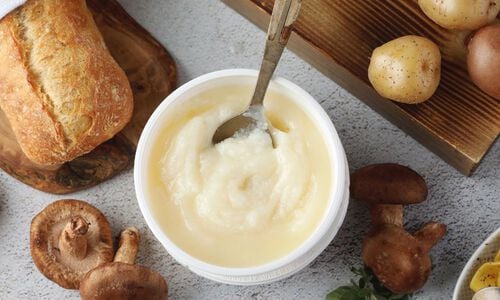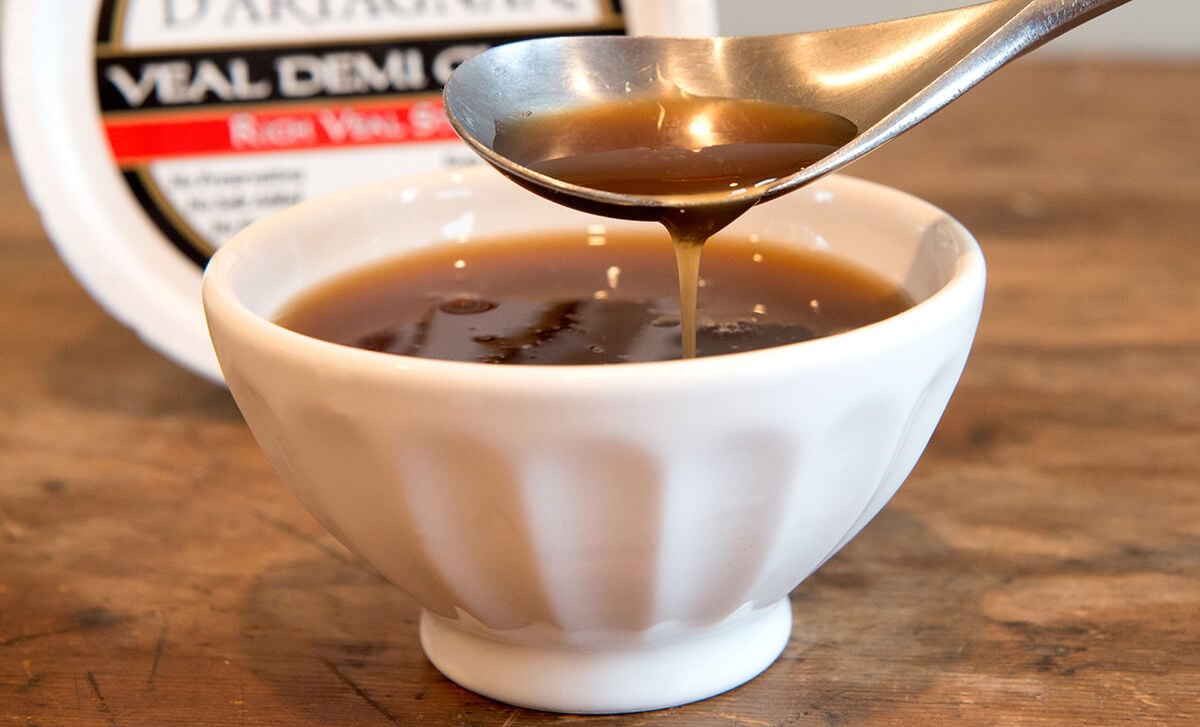
From the History (Cook) Books
Demi-glace is one of the rich brown sauces from classic French cuisine, made by simmering bones, aromatics and wine for days, which extracts the gelatin from the bones, concentrates the flavors and thickens the sauce. Traditionally it is made of equal parts veal stock and sauce espagnole, which is one of the five mother sauces of French cooking. The basic recipe for demi-glace comes from the father of French cooking Auguste Escoffier, but then, so do most recipes, as he’s the chef who codified the standard French recipes in the early 1900s. The term “demi-glace” comes from the French word glace, which means icing or glaze, and “demi” because a 1:1 ratio is reduced in half.
How We Make Demi-Glace
D’Artagnan offers two types of demi-glace: a classic veal demi-glace and a combination duck and veal demi-glace (we couldn’t resist!). Both are made according to traditional methods, beginning with the bone stock, which is slowly simmered until reduced by about half its volume. This takes 2-3 days and imparts great depth of flavor. The liquid is strained, then red wine is added, and again it’s reduced by half. Finally, a little tomato paste is stirred in, instead of sauce espagnole (which contains tomato). No additional gelatin is needed because the bones are rich in natural collagen. Nor is any salt or flour added. The result is a very concentrated stock that can be used as a base for other sauces, or by itself.
Cooking with Demi-Glace
Just a tablespoon or two of demi-glace will add richness and depth to a variety of dishes, from soups and stews to sauces and gravies. Demi-glace is an ingredient that every home kitchen should keep “in stock,” as professional kitchens do since it elevates every dish it touches.
- Get Saucy … First and most basic, demi-glace is for sauces. When deglazing a pan, whisk a few tablespoons into any pan sauce, like we do with our seared duck breast recipe. Try it with bison steak or pork chops. Demi-glace gets further reduced to make a velvety sauce with truffles in our pasta, mushroom and foie gras recipe.
- Cock of the Walk … Making a classic coq au vin stew is unthinkable without demi-glace, which is the stepping stone from thick roux to rich broth, and a base note of flavor.
- Soups and Stews … Think of demi-glace as seasoning; use it to punch up your soups and stews. Even a few tablespoons stirred in toward the final stage of cooking will impart savory richness to the dish. This classic Cajun-style rabbit stew is redolent with demi-glace.
- Braise Worthy … Any braising liquid will benefit from demi-glace, it adds body and depth to wine, stock, water or beer in the braising pan. Our recipe for braised lamb shanks shows you how it’s done.
- Stir it Up … A vegetable or mushroom stir-fry will sing with flavor when a scoop of demi-glace is added to the pan.
- Stock Shortcut … If you don’t have any chicken stock on hand when a recipe calls for it, you can fake it with demi-glace. Stir an entire container into about a quart of water and substitute for stock.
- I Dream of Beanie … In a pot or slow cooker, a few tablespoons of demi-glace added to beans will thicken up the base sauce and impart meaty flavor. A perfect example is cassoulet, the iconic bean and meat stew of Southwest France.
Storage and Use
You can store demi-glace in the freezer for months. If you don’t have time to thaw it out, just use a hot spoon to remove the amount needed for a sauce or to spike a soup.
